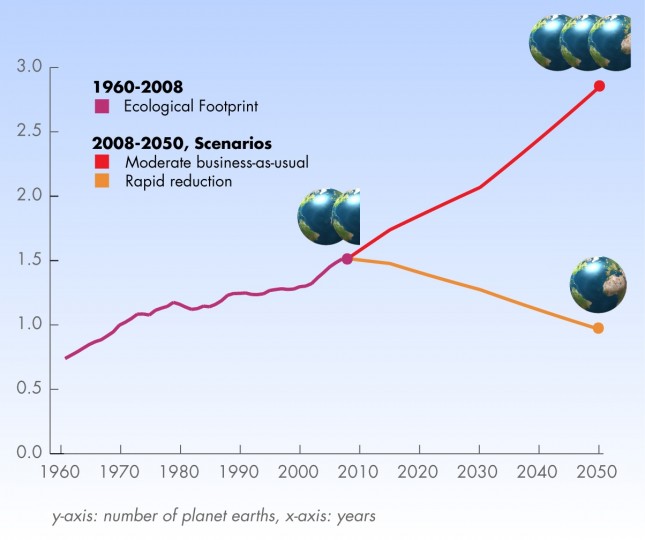
A date before August 20th 2014 will mark Earth Overshoot Day, the approximate date on which our resource consumption for this year will exceed the planet’s ability to replenish itself. 21 years ago, the date was October 21, by 2003 it was September 22nd and by 2013 it had moved forward to August 20th. Given our current increasing trend in consumption, one thing is unfortunately inevitable – overshoot arrives a few days earlier each year.
For those of us involved in development  education, Earth Overshoot day offers and excellent and accessible opportunity to teach and learn about sustainable development or, more accurately ‘unsustainable development’ as well as the concepts and values that underpin it. Designing a workshop, class or event in the lead up to this day couldn’t be easier or simpler – most of the ideas and information can be readily accessed at the Global Footprint Network site: www.footprintnetwork.org/en/index.php/GFN/page/earth_overshoot_day
education, Earth Overshoot day offers and excellent and accessible opportunity to teach and learn about sustainable development or, more accurately ‘unsustainable development’ as well as the concepts and values that underpin it. Designing a workshop, class or event in the lead up to this day couldn’t be easier or simpler – most of the ideas and information can be readily accessed at the Global Footprint Network site: www.footprintnetwork.org/en/index.php/GFN/page/earth_overshoot_day
Earth Overshoot Day represents the annual marker of when we begin to live beyond our ecological means in that year. From that date on, we live in a planetary ‘overdraft’ – we maintain an ecological ‘deficit’ by ‘drawing down’ local resource stocks and accumulating carbon dioxide in the atmosphere. But in the mid-1970s, humanity had crossed a critical threshold where our consumption began outstripping what the planet could reproduce. Today that deficit stands at over 50% – we are now using 1.5 planets each year to sustain our (over)consumption and if we continue to do so (even moderately), we will require about 3 planets by the year 2050. Obviously, this is an impossible equation.

The day offers us a chance to measure, explore and debate the growing gap between our demand for ecological resources and services, and how much the planet can provide.
The Global Footprinting Network site provides everything you need to know about ecological footprinting and all that is needed for an effective research project or group discussion from definitions to glossaries to summaries and onward referencing. For example, the site explores the ecological footprint of specific countries (with a detailed data table) and cities; it explores the concept of the earth’s biocapacity (a useful and accessible summary and links to the World Wildlife Living Planet Report or see our short annotation) and a fascinating discussion of how many times individual countries exceed their individual ecosystem capacities.
For example, Japan today uses up a capacity 7.1 times more than its own ecosystem can provide (see that of other countries in the diagram above). An excellent summary of the key arguments involved can be found in an article by Carter Roberts called The Day the Earth Ran Out (20th August 2013) in Foreign Affairs.
A related and equally informative footprint – the water footprint can be explored here www.waterfootprint.org including that of individual products, countries and regions.
______________________________________
For more….
- See our section on Consumption developed in 2013 with supporting animations, activities and data tables www.developmenteducation.ie/consumption
- Is your country an ecological creditor or debtor? Check out the Global Footprint Network and ESRI’s interactive story map of ecological creditors and debtors here https://storymaps.esri.com//globalfootprint
